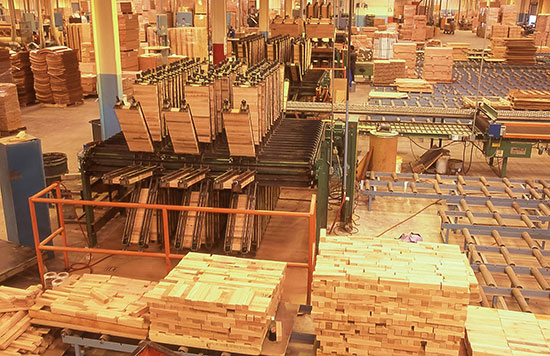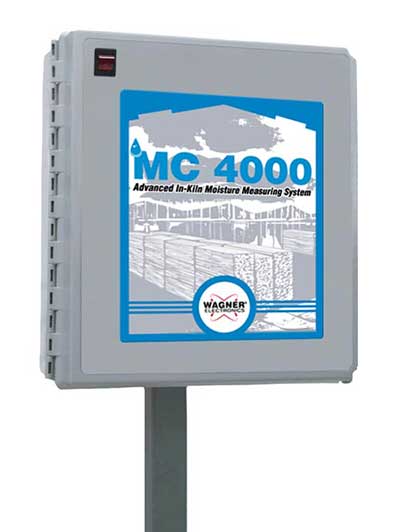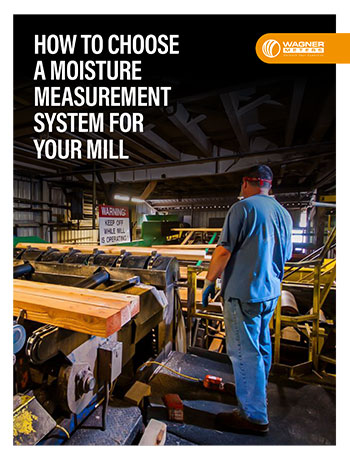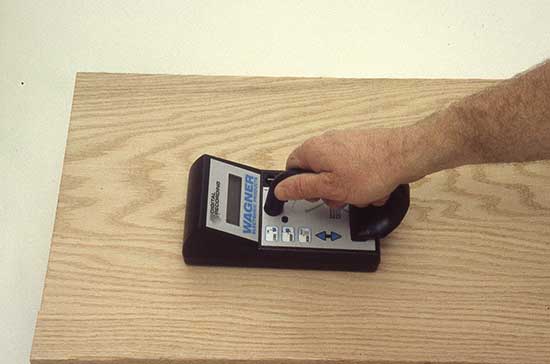Achieving the Best ROI for Your Sawmill

For any sawmill, moisture management gives you perhaps the highest return on your investment.
When your staff reviews your sawmill finances, does your team know which spending returns the highest ROI? Not all spending is equal. Sure, the sawmill invests money in having spare parts on hand so operations can continue. It’s a smart, practical insurance policy that helps the sawmill maintain productivity. Labor costs are always a big expense, but you have to invest in high-quality workers, right?
Most expenses contribute positively to the bottom line in some way. So it’s easy to overlook that the one cost contributing perhaps the highest ROI to the sawmill is its moisture management program. The impact moisture management has on the sawmill’s grading, reputation, and ancillary costs is substantial. With everything the sawmill spends, the easiest path to greater ROI is to run a comprehensive moisture management program with the right equipment and support.
Why Understanding Moisture Content Will Help You Generate a High ROI
Moisture always affects wood. Consequently, how you manage moisture content affects the sawmill’s costs and revenue. Let’s break down the three key areas where smart moisture management maximizes ROI and poor moisture management can undercut revenue and increase costs.
1. Quality control and lumber grading
Over-drying or under-drying wood, or drying it too quickly, negatively affects the lumber’s quality. If it comes out of the planer mill too dry, you’re going to have to sell that lumber at a lower grade because of checks, splits, wane, or other defects caused by excessive dryness. If the overdried wood gets torn up going through the operations, then it will be downgraded even further, and create unnecessary downtime to clear the debris.

When selecting any in-kiln moisture measurement system, such as the Wagner MC-4000, you’ll want to consider both design and durability.
Since each piece of lumber doesn’t dry at the same rate, drying it too quickly can lead to cracks and splits. More reasons the lumber will get downgraded and sold at lower rates.
When the lumber isn’t dry, you have two choices. You can drop it out of the production process entirely, which is a complete loss. Or, you can run it back through the kiln or let it air dry. Either way, going through the drying process a second time increases the costs of processing that lumber. So it might sell for a good rate because it has a high grade, but the profitability goes down.
Moisture management is a critical driver for optimizing your lumber’s grade recovery.
2. Protect the sawmill’s brand and reputation
If the sawmill delivers wood that has a high moisture content, it’s going to start getting wet claims against it. Many times the first thing the furniture maker or construction company is going to do on delivery is measure the wood’s moisture content. If the moisture content is too high, the buyer is either going to want a refund or refuse to pay for the wood. That’s a hit to the bottom line, for sure.
But that harsher hit comes when people decide not to buy from your operation any longer. They may tell you why. They may not. You also may never know who they tell that your sawmill delivers unreliable quality.
3. Decreased energy costs
Over-drying the lumber brings higher energy costs. Keeping wood in the kiln for a long time raises the energy costs for each board foot you produce. Running the wood through the kiln a second time also increases the costs and slows down productivity.
Your sawmill needs the right moisture measurement tools to run a moisture management program that boosts your profitability. From in-line and in-kiln meters to handheld meters, moisture meters are critical tools that keep you on top of the wood’s moisture content (MC) each step of the way.
Getting the Most from Your Moisture Measurement Equipment
Using high-quality wood moisture measurement tools is a vital part of the sawmill’s investment in a moisture management program. It should also invest in employee training to ensure it’s getting the full value that the moisture measurement equipment can provide.

Free Download – How to Choose a Moisture Measurement System for Your Sawmill Buying Guide
In-line moisture equipment: In-line moisture measurement hardware is sophisticated, technologically-advanced equipment. Through its software interface and integrations, it gives you a lot of detailed information regarding the moisture content levels throughout each board. The more moisture measurements the in-line system takes, the more value it provides. You can trim out wet areas and analyze high and low moisture spots to identify potential problems in the kiln-drying or manufacturing process. But it’s not magic. It requires training and understanding by the employees using the in-line system for it to work properly and to get the most value from it.
In-kiln moisture equipment: Kiln management requires planning. In-kiln moisture measurement systems need to be set with correct parameters to operate properly on the load. The size of the load, the species, its current MC—these are just a few of the properties that affect the drying process. Employees responsible for running the load must know how to set the parameters in the moisture measurement system so that it functions accurately.

Industrial hand-held meters are indispensable for spot checking and quality control.
Given that the equipment operates under physically challenging conditions, it’s vital that you give the same attention to the condition of the in-kiln and in-line sensors as you do the rest of your sawmill equipment. When selecting an in-line or in-kiln moisture management system, consider how the design and durability of its materials will hold up over the long haul. The vendor should provide you with clear guidelines on how to maintain your equipment to maximize its lifespan.
Handheld moisture meters: Hand meters are invaluable for spot-checking and quality control. Measuring the moisture content of the wood needs to be thorough so that you avoid disappointing surprises for your customers or your grading expectations.
The first choice is whether to buy a pin or pinless moisture meter. Pin meters take longer to use, which reduces either the efficiency or completeness of measuring MC. Employees can work faster with a pinless moisture meter. Using a moisture meter attached to a stack probe helps them work even faster, instead of having to unstack wood in order to take moisture measurements.
A Moisture Management Program Contributes to Your Bottom Line
To make sure your sawmill gets the full value from its moisture management program, select your moisture management tools carefully with due diligence to the training and support provided by the vendor.
With the right equipment, reliable vendor support, and well-trained staff who can use it to maximum effect, your sawmill opens up a variety of opportunities that will help maximize ROI.
Larry Loffer is a senior technician at Wagner Meters, where he has over 30 years of experience in wood moisture measurement. With a degree in Computer Systems, Larry is involved in both hardware and software development of wood moisture measurement solutions.
Related Posts via Taxonomies
Last updated on June 7th, 2022



